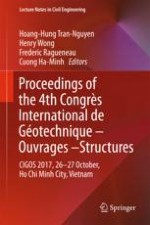2018 | OriginalPaper | Buchkapitel
Correlations Between DCP Penetration Index and Properties of Pavement Layer Materials
verfasst von : Suppakorn Wachiraporn, Auckpath Sawangsuriya, Wilailak Sramoon
Erschienen in: Proceedings of the 4th Congrès International de Géotechnique - Ouvrages -Structures
Verlag: Springer Singapore
Aktivieren Sie unsere intelligente Suche, um passende Fachinhalte oder Patente zu finden.
Wählen Sie Textabschnitte aus um mit Künstlicher Intelligenz passenden Patente zu finden. powered by
Markieren Sie Textabschnitte, um KI-gestützt weitere passende Inhalte zu finden. powered by
